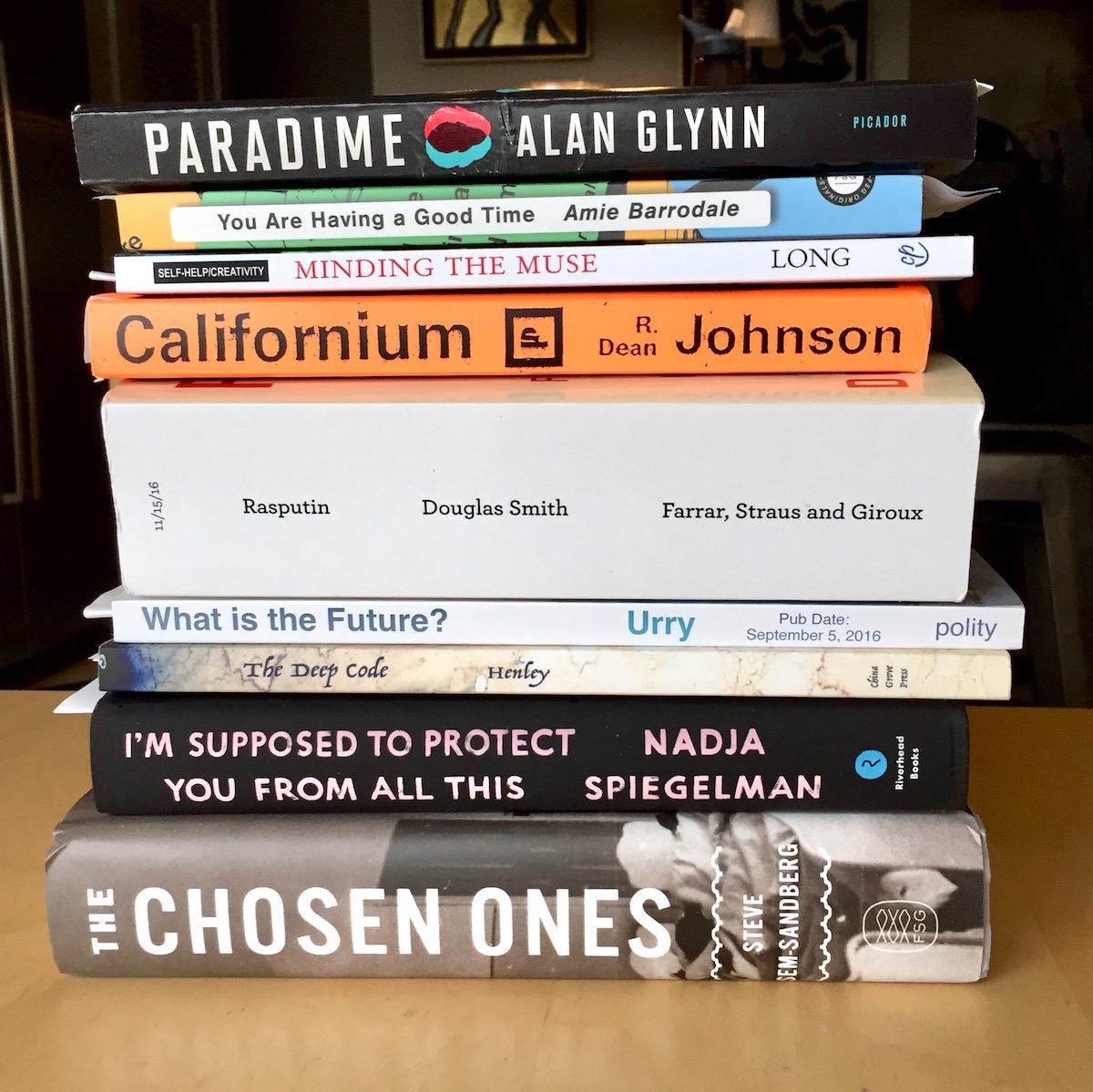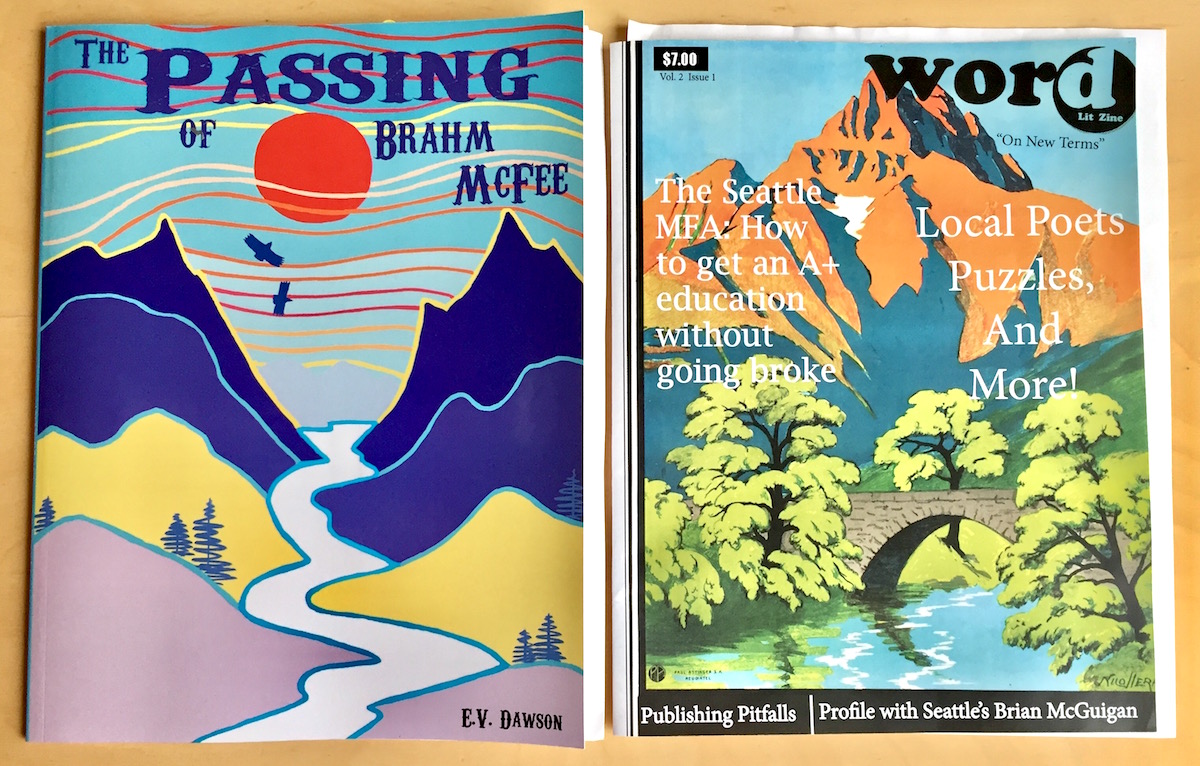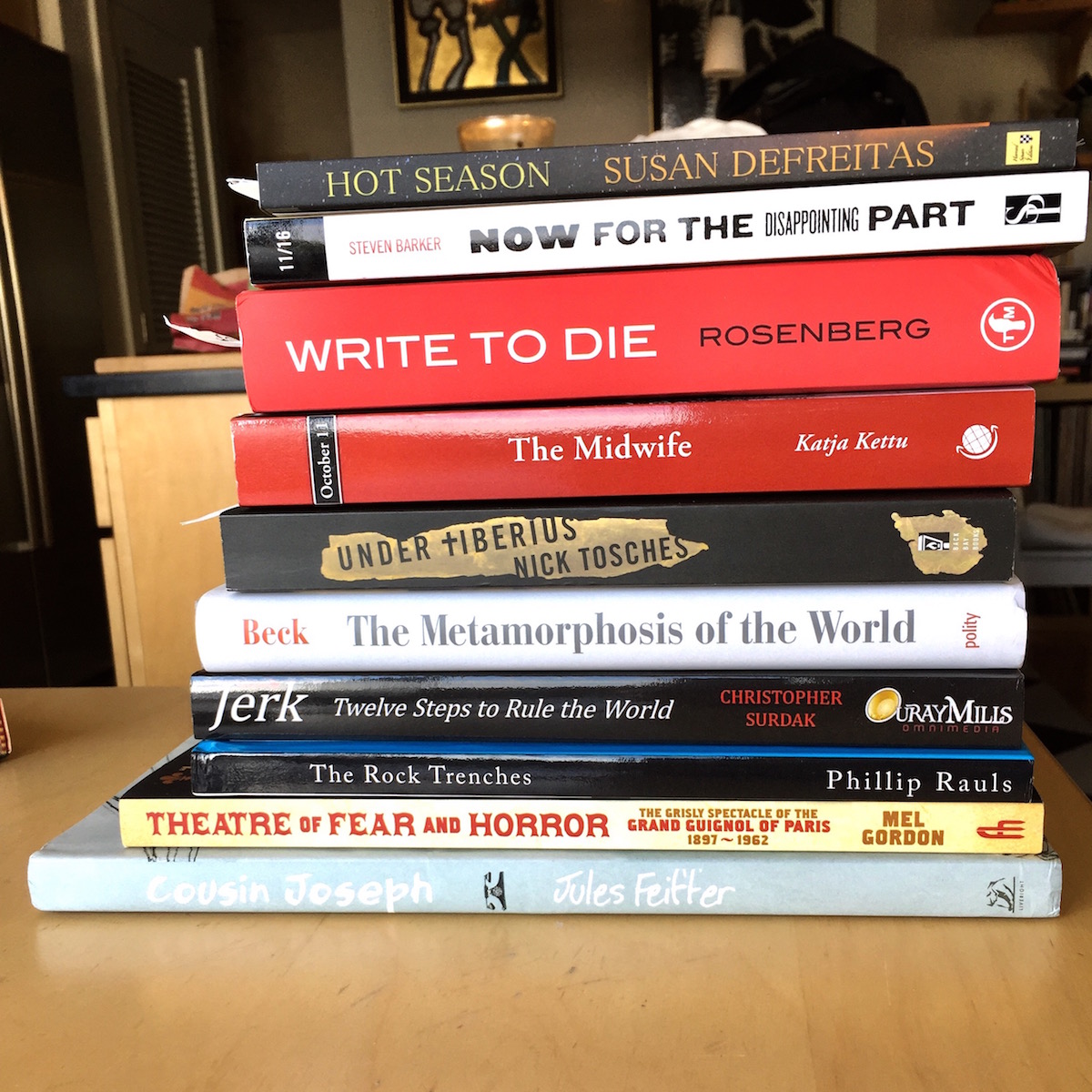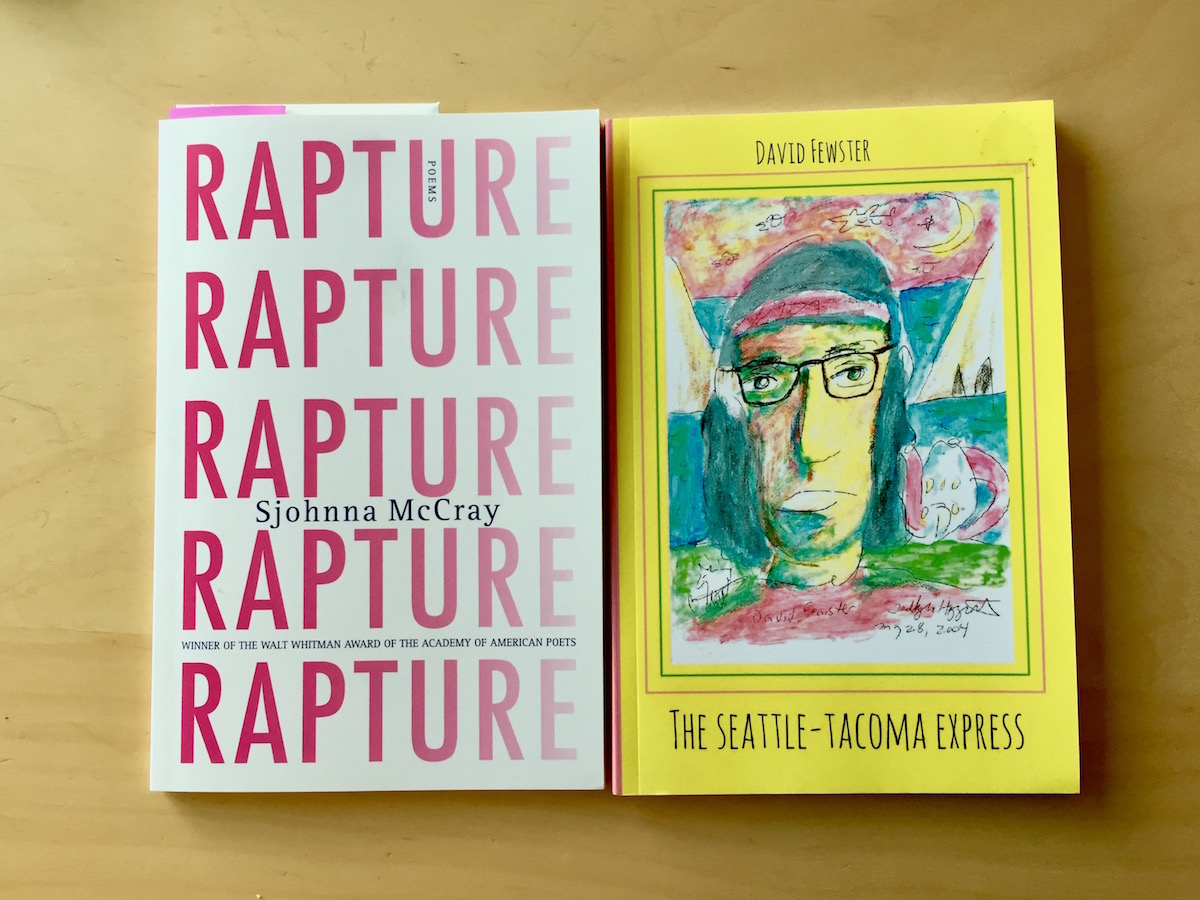An important novel about gay men and AIDS in 1980's Seattle
Sponsor John Whittier Treat's novel The Rise and Fall of Yellow House was a 2015 Lambda Literary Award finalist for best Gay Novel, and he's here to show an excerpt and make sure you're aware of the book. It's 1983, and Jeff has fled New York, and the beginning of the AIDS crisis, to Seattle and here meets Henry, who is fighting his own demons. Their love, and the middle-aged divorcee Nan who has opened her house to gay men in crisis, form the center of this moving work.
We've got an excerpt on the sponsor's page so you can find out for yourself why Kirkus called it "A compassionate, engrossing novel of life in the early plague years, depicted here with authentic detail and a true heart."
It's thanks to sponsors like John Whittier Treat, and readers like you, that we're able to keep the pixels lit up here at the Seattle Review of Books. We've just released our next block of sponsorship opportunities. Check them out on the sponsorship page, and grab your date before they're gone.
The skin of the unconscious, ripped open
Published July 18, 2016, at 12:01pm
Sometimes when you love a city, you have to leave it. And vice versa.
Christina from Ravenna Third Place Books recommends your next summer read
Every Monday in the month of July, we’ll talking to Seattle-area booksellers about the books they’re most excited to read this summer.
Christina at Ravenna Third Place Books has the perfect book for your summer vacation: The Winged Histories by Sophia Samatar. As a fan of speculative fiction and high fantasy, Christina says Histories brings something new to the genre, “a response to tropes of the fantasy genre that tend to go unexamined, like the glory of warfare or toxic masculinity or colonial oppression and things like that.”
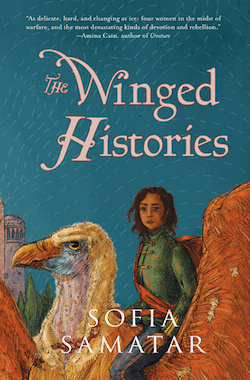
Many of these characters in Histories are huge readers, and their reading greatly influences their actions. The duaghter of the priest comes from a cloistered background, for instance, while the emperor’s niece is a soldier who has “grown up reading epics about swordmaidens.” And Samatar’s deep research into the gender divide in nomadic literature provides a central conflict in the poet’s story.
So who would Christina recommend Histories to? “It would be great for anyone who’s in love with fantasy,” she says, “and is curious to see it from a different perspective.” She says people who love reading will find much to enjoy here: “there’s such a discussion woven naturally in this book about the effect that reading a lot can have on your view of the world,” Christina says, that the act of reading the book takes on a deeper and more pleasurable resonance.
The Sunday Post for July 17, 2016
The Suit That Couldn’t Be Copied
Akhil Sharma tracks his attempt to copy one of Davide Taub’s suits, crafted so excellently they even “suggest a controlled intelligence.” Sharma’s piece is surprisingly fascinating and sheds light on various aspects of being a designer on Savile Row.
When I saw Taub’s clothes, I was struck with desire. I have always dressed like a schlub; to do otherwise feels like competing to make myself attractive, which feels like setting myself up for humiliation. But I had the sense that if I wore a garment by Taub, I would become a different person. It was this desire — combined with the fact that one of his overcoats starts at around six thousand dollars, and one of his suits at eight thousand — that made me wonder if I could get a tailor in some less expensive part of the world to copy one of his garments.
Don’t Blame My ‘Broken Windows’ Theory For Poor Policing
George Kelling and James Q. Wilson co-authored a theory in the early 80s which essentially states that small signs of disrepair and lack of care in a community — such as broken windows — can lead to more serious issues. This criminological theory has garnered a lot of attention recently as the spotlight shines on policing — good and bad. But Kelling says his theory has been seriously misunderstood and is here to clear things up. This YouTube video about a “spot-fixing” project in India reflects Kelling’s idea that good policing seeks to address a community’s broken windows.
First of all, broken windows was never intended to be a high-arrest program. Although it has been practiced as such in many cities, neither Wilson nor I ever conceived of it in those terms. Broken-windows policing is a highly discretionary set of activities that seeks the least intrusive means of solving a problem — whether that problem is street prostitution, drug dealing in a park, graffiti, abandoned buildings, or actions such as public drunkenness. Moreover, depending on the problem, good broken windows policing seeks partners to address it: social workers, city code enforcers, business improvement district staff, teachers, medical personnel, clergy, and others. The goal is to reduce the level of disorder in public spaces so that citizens feel safe, are able to use them, and businesses thrive. Arrest of an offender is supposed to be a last resort — not the first.
At Sea, and Seeking a Safe Harbor
In her New York Times essay, Hugo House student Putsata Reang discusses identity in an incredibly compelling way. She attempts to reconcile a sense of self and loyalty to her mother, a struggle present in several of her life’s most important moments.
We’re left wedged inside too tight a space, Ma and me. If I am to be a good Cambodian daughter, I must sacrifice an essential part of who I am and lose my partner, who loves me with her full nurturing force. If I am true to myself, I cause Ma to lose a fundamental part of who she is as a Cambodian mother.
I see no middle ground, no safe harbor for us to come ashore together. But I know who I am, and how I am like her. I know that same impulse of hope in Ma is alive in me, beating beneath my ribs, something she breathed into my soul on a wayward ship so long ago.
Do no harm
Hospitals have seen thousands of deaths — nearly 10,000 in 2013 — caused by a preventable infection. Sarah Kliff explores the history and progress of central line infections, caused by bacteria entering a central line catheter that goes directly to a patient’s heart.
Researchers showed that doctors could significantly reduce, and in nearly all cases eliminate, central line infections if they followed a short safety checklist.
Central line infections fell 46 percent between 2008 and 2013, a huge success for public health. At the same time, these figures exasperate experts: Given everything we know about preventing central line infections, why do they happen at all? And why did they happen, four times, to Nora?
The Calligraphy of Alice - Kickstarter Fund Project #28
Every week, the Seattle Review of Books backs a Kickstarter, and writes up why we picked that particular project. Read more about the project here. Suggest a project by writing to kickstarter at this domain, or by using our contact form.
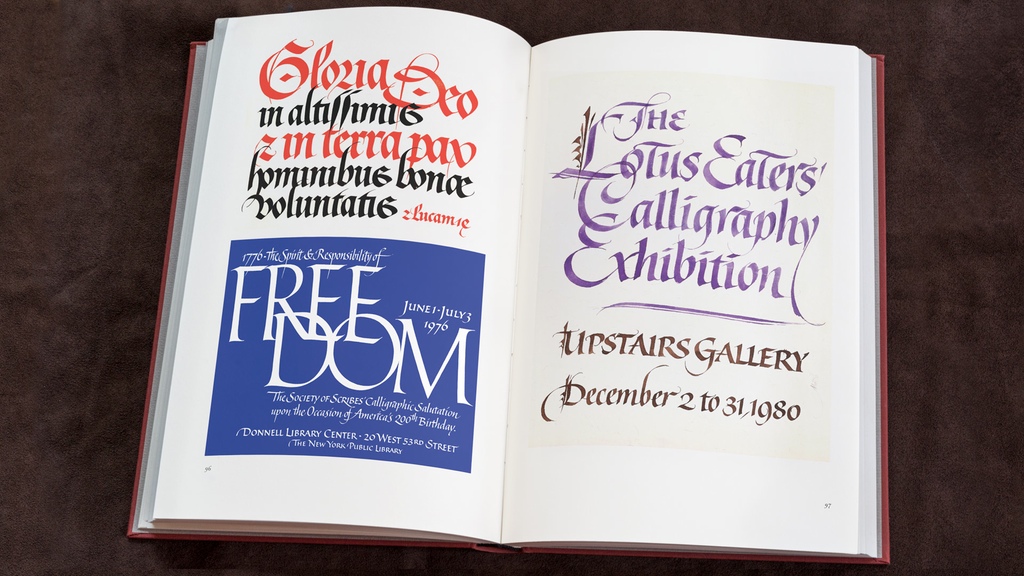
What's the project this week?
The Calligraphy of Alice. We've put $20 in as a non-reward backer
Who is the Creator?
What do they have to say about the project?
A first-ever compilation devoted to Alice’s calligraphy and drawing
What caught your eye?
Calligraphy is the most amazing thing. Nobody knows letterforms with the acuity and brilliance of a master calligrapher, and there is not a master calligrapher alive better than Alice Koeth. Her work is simply breathtaking. Think about how many times you've seen work like hers — or, if you're in New York, maybe hers — and wondered who made it. Well, come meet Alice.
Alice also has spent her life sharing technique, teaching her craft, and making sure others knew how to wield the mighty pen as well as she could.
Why should I back it?
Alice has a classic hand. Her work has a distinct 20th century feel to it — which is not to say dated. It is to say that the craftspeople who made the graphic arts in that era had hand skills that very few designers or lettering artists today could match. They came from years of daily work, of constantly studying letters and composition in a way that computers, with their perfect lines and instant imagery, can't match.
We are not Luddites here at the Seattle Review of Books, but you don't need to be one to mark the differences that working inside a computer, where nothing is ever permanent, and taking wet ink to a piece of expensive paper to make a complicated design that you could ruin with a bad mark. Confidence, craft, and care make master calligraphers. What an amazing joy to witness a collection of Alice's work in this format.
How's the project doing?
They're 171% funded with 13 days to go. They don't need you in the slightest. But, if you're drooling looking at the photos, you should definitely throw your money down for a copy of this awesome work.
Do they have a video?
Kickstarter Fund Stats
- Projects backed: 28
- Funds pledged: $560
- Funds collected: $500
- Unsuccessful pledges: 1
- Fund balance: $480
Obligatory Pokemon Go Post

I haven’t played Pokémon Go, but the idea of augmented reality has intrigued me for quite some time, and so I’m glad it’s finally here. More than virtual reality, augmented reality strikes me as something that might transform the way we interact with technology, and the way we interact with the world. To my novice’s eye, it’s an interface as fresh and as exciting as the first iPhone was.
These sorts of technological leaps always seem to arrive in banal forms; if you had told me a few years ago that Pokémon would have been the portal through which augmented reality reached the masses, I would’ve believed you. Why not? The battle between VHS and Betamax was decided because of the porn industry. Why wouldn’t AR arrive in the form of a retro throwback game?
But more important than that, what’s next? If Pokémon Go is the launch of mainstream AR — and I can’t imagine there aren’t thousands of CEOs out there in the world demanding that their poor overworked staffs deliver the “next Pokémon Go” — then we’re about to enter my favorite period of any new technology: The Great Screwing Around. This is the period when the form feels like it has boundless possibility for creative pursuits.
And so I wonder: who’s going to write the first great AR novel? I hope someone is working on this is Seattle. Imagine an e-book that sends you around the city, to consult with characters crouched in doorways or visit virtual “buildings” built on top of city parks. Imagine a book with chapters that can only be unlocked when you visit certain spots in the city, a book that can be read in any order, depending on where you walk and how you uncover the story.
The e-book “revolution” has largely been a bust. E-books could have changed the popular idea of what books are, but instead they have unimaginatively clung to the form of physical books. Augmented reality offers a way to expand e-books, to link them inextricably to a place and a time, to expand a book out into the physical world in a way that print books simply cannot.
Dickens famously wrote in his head as he walked through the streets of London. Imagine a novelist who instead inspires her readers to walk through the streets of Seattle to read. Imagine a book that guides readers to its own discussion group, or that brings readers together for a party where the last chapter is revealed.
Right now, the possibilities to this format are endless. But as AR continues to be filled in with Pokémon and other intellectual properties, the boundaries will start to be delineated, and the possibilities will seem smaller and smaller. Right now, while the world is still enthralled with this technology, there’s still time for literature to grab its plot of land and see what can be found.
Cienna Madrid is on vacation this week, which means there is no new Help Desk. Please peruse the Help Desk archives for your advice fix; Cienna will return with a new column next week.
And if you have any book etiquette questions, you can always send them to advice@seattlereviewofbooks.com. Did you witness rude behavior at a bookstore? Do deckled edges detract from your enjoyment of a book? Are you sick of people opening their readings by talking about how boring readings are? Cienna can help. Send an email today.
Portrait Gallery - Natasha Marin
Each week, Christine Marie Larsen creates a portrait of a new author for us. Have any favorites you’d love to see immortalized? Let us know

Local poet Natasha Marin is reading tonight, July 14. She'll be presenting her poem "Red Lineage" in a show on Capitol Hill.
Book News Roundup: Did Hemingway keep guinea pigs?
Hooray for Dr. Carla D. Hayden! As of yesterday, she's officially the 20th Librarian of Congress and, as Shelf Awareness notes, she's "the first woman, and the first African American, to serve as chief executive of the Library of Congress."
This Vulture profile of Helen DeWitt is definitely worth your time. And if you haven't read her long-out-of-print novel The Last Samurai, it's available again in finer bookstores everywhere. DeWitt is an American literary genius, and this profile perfectly captures that:
At the core of The Last Samurai is the notion that most people don’t meet their potential because the culture teaches them to assume there are things they just can’t do. The central example is Ludo reading Homer in the original Greek. “The Greek alphabet looks more daunting than it really is,” DeWitt said. “I could get anybody reading the Greek script in an hour. I thought that this could be something that I could reveal in the book. People might read the novel and think, Gosh, if somebody had introduced this to me I could have done it. And so now I can have a grievance against our education system, just like the author of this book.”
- If you love to hate-read, you can't do much better than the highlights of the insufferable email exchanges between Natalie Portman and novelist Jonathan Safran Foer. The Cut's exerpts begin with Foer:
It’s almost 6:00 in the morning. The boys are still asleep. I can hear the guinea pigs stirring, but that might be the residue of a nightmare. People often refer to aloneness and writer’s block as the two great challenges of being a novelist. In fact, the hardest part is having to care for guinea pigs.
KUOW reporter Marcie Sillman filed a piece this morning about a new book conservation program at the University of Washington:
More than 10,000 items flow through the center every year; everything from fragile maps that need protective casings to books with torn bindings. Most of the binding work is outsourced to commercial binderies, but in-house conservators tend to the rare books, pamphlets and other delicate materials.
If you've ever wondered about the preservation of books, this is very much worth your time. Full disclosure: Sillman quotes me in the piece, but despite my involvement it's very much worth your while.
Thursday Comics Hangover: The Super-Man of Shanghai
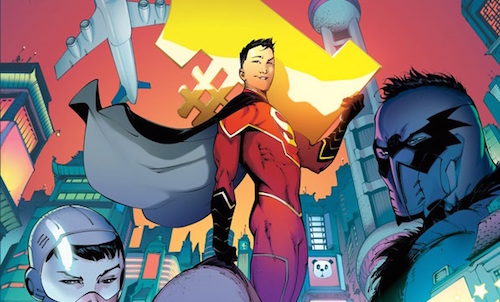
The thing about writing a Superman story, I remarked a few months ago after watching the dreadful Batman V Superman movie, is that the conflict should be based in exploring the concept of morality. All the superheroic trappings — the laser eyes, the flight, the strength — are basically just window-dressing. This is why Superman is a character who easily splinters into many different personalities: when the character famously died in the 1990s, he “returned” as four distinct characters, each with their own variation on the Superman theme, and each with their own spin on what it means to be a moral person.
The new DC Comics title New Super-Man is yet another variation on Superman, and it’s one of the best I’ve seen in quite some time. It doesn’t demand that you understand the internecine continuity of modern DC Comics, or really much of anything beyond the rudimentary idea of Superman. And the idea behind the series is deceptively simple: it takes the concept of Superman and transplants it to modern-day China.
Written by cartoonist Gene Luen Yang and penciled by Viktor Bogdanovic, New Super-Man is narrated by Kong Kenan, a young Chinese man. When we first meet him, Kenan is bullying a nerdy classmate and stealing his lunch. Through a coincidence that is probably more than a coincidence, Kenan is mistakenly labeled a hero. We meet his supporting cast including a nosy reporter named Laney Lan; Kenan’s father, a writer who is preparing to reveal a “secret government agency doing…evil stuff”; and a mysterious woman named Dr. Omen. One of the characters alludes to a slightly modified version of Superman’s credo — Truth, Justice, and rather than the American way, just plain old Democracy — and Kenan gets Superman’s powers.
So far as origin stories go, New Super-Man is not breaking new ground, but Yang manages to convey a lot of information in a small amount of space. This is obviously a book that is set in China, but it’s not over-the-top; no landmarks like the Great Wall of China are cartoonishly alluded to and nobody discusses their relationship with the United States. We’re told by a caption that all the dialogue we’re reading is translated from the Mandarin, with the exception of words printed in blue, which are spoken in English. It’s a full-immersion technique, and it works. This isn’t a book that could be set in Poughkeepsie. It’s very much of its time and place.
Bogdanovic’s art is more than a little stealthy: using some straightforward visual vocabulary like superhero anatomy and sci-fi elements, he relaxes readers who expect something traditional, but he sneaks in some extra exaggerations here and there — a ridiculously large gaping mouth, say, or some heavy shadow on a brooding Kenan’s face — to introduce a looser, more cartoony feel. The Shanghai in these pages might as well be a science-fiction city, the way Bogdanovic draws it, with its high-spire Jetsons architecture and the bright orange and turquoise palette provided by colorist Hi-Fi.
Because New Super-Man is so, uh, new, it’s hard to say exactly where Yang is going with all this. Will this be a political book? Is it a commentary on superheroes, or a relatively straightforward tribute to earnest heroics, like G. Willow Wilson’s Ms. Marvel? It really could go anywhere from here, which is exciting. The one theme that is absolutely clear from this first issue is that Yang is going to be using the character of Kenan to explore morality, both as a universal concept and what it means for the individual. In other words, it’s already apparent that it’s a very good Superman comic.
Jason Weisberger writes about a San Francisco Little Free Library that was targeted by some vandals. This is, of course, outrageous and I'm glad they keep putting the Library back up.
However, I have noticed that we've seen a flood of Little Free Libraries in Seattle over the last year and a half, and I must say that the quality of books in those libraries has markedly decreased, with a lot of magazines, hopelessly battered paperbacks and dated technical books popping up all around town.
I think, and I do not have any data to back this up, the problem is that perhaps there are too many Little Free Libraries in Seattle? The quantity of Libraries is perhaps finally outstripping the quality of their stock.
I'd invite anyone considering launching a Little Free Library of their own to investigate the situation in their neighborhood — if there's another Library five or six blocks away from your home, maybe you should just work as hard as you can to contribute to the pre-existing one? After all, as Cienna Madrid pointed out back in February, it takes a community to raise a Little Free Library.
Your Week in Readings: The best literary events from July 13th - July 19th
Wednesday July 13: HEX Reading
Dutch author Thomas Olde Heuvelt’s horror novel HEX was a worldwide bestseller before it was even translated into English. Now it should become a bestseller in America, too; it’s got all the elements of a good horror yarn, including a witch’s curse, imperiled teens, a plague of suicides, and the fate of the known universe. University Book Store, 4326 University Way N.E., 634-3400, http://www2.bookstore.washington.edu/. Free. All ages. 7 p.m.Thursday July 14: REMEMBER ME
See our Event of the Week Column for more details. Vermillion Art Gallery and Bar, 1508 11th Ave., 709-9797, http://vermillionseattle.com. Free. All ages. 6 p.m.Friday July 15: Represent This!
Beloved Greenwood hangout spot the Couth Buzzard presents a politically minded cabaret featuring music, stories, poetry, and comedy. I’m most looking forward to Seattle poet David Fewster, long a very funny open mic mainstay who just published his very first collection with the Couth Buzzard’s brand-new press. Couth Buzzard Books, 8310 Greenwood Ave N., buonobuzzard.com. Donation. All ages. 7:30 p.m.Saturday July 16: Second Life Reading
SJ Watson writes the kind of twisty psychological thrillers that Hollywood swarms over like horny locusts. Before I Go to Sleep became a movie starring Nicole Kidman and his newest, Second Life, has already been optioned by Reese Withersppon, who also produced Gone Girl. Tonight, Watson will be interviewed onstage by Seattle memoirist Sonya Lea. University Book Store, 4326 University Way N.E., 634-3400, http://www2.bookstore.washington.edu/. Free. All ages. 3 p.m.Sunday July 17: Friends of the Library Pop-up Shop
You have for sure attended the semiannual Friends of the Library book sale, right? Well, lately, the Friends have been trying something new: a mini-used bookstore that travels from branch to branch, with a small selection of quality books (mostly paperbacks and kids’ books) for just a buck a piece. Magnolia Public Library, 2801 34th Ave. W., 386-4225, splbuzz.com, free, all ages, 1 p.m.Monday July 18: The Fire Line Reading
Due to climate change, we’ve gotten used to the annual display of out-of-control wildfires and the brave women and men who fight them. Fernanda Santos’s new book recounts one of the deadliest days in the history of firefighting, describing the kind of nightmare we might see more of in the near in future. Third Place Books Lake Forest Park, 17171 Bothell Way NE, 366-3333, thirdplacebooks.com. Free. All ages. 7 p.m.
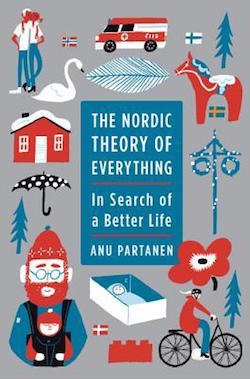
Tuesday July 19: The Nordic Theory of Everything Reading
For a year, Bernie Sanders talked up the Scandinavian way of life: free health care, income and gender equality, and other so-called “socialistic” government programs. In her new book, Finnish journalist Anu Partenan discusses the values that Scandinavian government is based on and whether those philosophies are compatible with everyday life in the U.S. Elliott Bay Book Company, 1521 10th Ave, 624-6600, elliottbaybook.com . Free. All ages. 7 p.m.Literary Event of the Week: REMEMBER ME
Here’s a poem called “Red Lineage:”
My name is Vulnerable Red.
My mother's name is Staunch Red.
My father's name is Red-Eye Red.
I come from a people known for flagrance
& survival.
Remember me.
Here is another poem called “Red Lineage:”
“Red Lineage” is a poem told in variations, and written by many poets. In some of the poems, the mother’s name is Sea Red or Bad to the Bone Red and the father’s name is Mountain Red or Murder Red. In some, the people are known for “originality and truth” or “starting fires and depravity.” They all want to be remembered.
In videos of “Red Lineage,” people usually stand in front of a red background, often in ornate costumes, and read their variations of the poems. They submit under anonymous names like “Jessica A.” or “TW.” At redlineage.com, people are encouraged to type their own “Red Lineage” poems into a form, with blank spaces just waiting to be filled in, Mad Libs-style. You can go and fill out as many as you like right now, if you want. “Red Lineage” was founded by Seattle poet Natasha Marin as a ritual/performance art piece. The project takes on many different aspects: sound collage, dance, video, all connecting themes of parenting and legacy and the color red.
By using a simple poem that can withstand infinite variations as the container for the project, Marin is allowing an unending parade of agendas and ideologies and beliefs to funnel through “Red Lineage.” The many intents mean the poem is always changing, but something ineffable survives every modification, no matter what a particular poet brings to the framework. You’ll find echoes, strings connecting poems, a thematic influence that seems to run deeper than words or even thoughts: perhaps the meaning springs from somewhere inside our blood?
This Thursday, Marin presents “Red Lineage” as part of a show called REMEMBER ME at Vermillion Art Gallery and Bar on Capitol Hill. She’ll be digging deep into a multimedia archive collected over a decade. That’s a lot of contributors — and a lot of mothers, and fathers, and memories. From her women-only Read and Bleed series to her Miko Kuro’s Midnight Tea events to her People of Color Salons, Marin’s work is all about community and inclusion — in a city whose art scene erases people of color with alarming regularity, she empowers and uplifts people of color, women of color, artists with disabilities, and other neglected populations. In some ways, REMEMBER ME feels like the purest extension of Marin’s work. She’s sharing a common tongue with people, inviting them to speak for themselves, and demanding that everyone notice, and, yes, remember them.
Vermillion Art Gallery and Bar, 1508 11th Ave., 709-9797, vermillionseattle.com. Free. All ages. 6 p.m.
Short on pages, long on ideas
Published July 12, 2016, at 1:10pm
As big-name publishers attempt to capture short attention spans with genre novellas, one Seattle-area sci-fi publisher gets it right.
The most heavily policed book club in the history of Seattle?
Comedian and activist Brett Hamil notes that the Seattle Police Department came out for a discussion at the Beacon Hill Library:
Part of #SPD presence on #BeaconHill this weekend for black-led discussion at a LIBRARY (pic by @thestationcafe) pic.twitter.com/Xxm2CgTm1w
— Brett Hamil (@BrettHamil) July 11, 2016
Were all those police there just for a meeting of the Seattle Black Book Club? Apparently. Here's an account of what happened:
Actually @bruceharrell is one to call about this, it happened in HIS district. 206-684-8804 to reach Elusive Bruce pic.twitter.com/Zw6PkbQF3E
— Brett Hamil (@BrettHamil) July 11, 2016
The Seattle Black Book Club describes themselves as "a Black led community organizing group. We focus on the plight of the Black community to alleviate racial opression.We strive for Black liberation." You can read more about them on their Facebook page.
While I encourage everyone in the city to take an interest in literacy and book clubs, I'm going to theorize that the Seattle Police Department's interest in the Seattle Black Book Club might not be of a strictly literary persuasion. Maybe they ought to back off and let people talk about what they want to talk about without escalating the situation?
And further: maybe, just maybe, we should allow book clubs to meet in Seattle without the kind of police coverage we ordinarily see for May Day marches?
As In
On the plane I whisper the travel prayer more softly
I mouth the words but keep the breath carefully
concealed in my throat, worried I don’t have a permit
for these verses in international airspace.The prayer is filled with soft sounds
Ash-ha-du a tender hush, unlike
the sharp hiss of testify. And the mess
of vowels la ilaa ha illaa wants breath
it is difficult to keep this all inside.
It is difficult to pray, and even more
difficult to marvel or to rage.Allah was my go-to word
for all the moments of the day
the wonders
as in
(close your eyes and savor here)
Allaaaaah can you believe the fragrance of this gardenia?
the colors of this sunset? How is it your lips
are still as sweet as the first time?and the transgressions
as in
(clench your fists and tremble here)
Allahu akbar!
Please help me survive this
Please help me believe this will end
Please help me trust there is some power
greater than all this suffering.
Tobias Carroll at Vol. 1 Brooklyn writes that Dennis Cooper's lively blog has completely disappeared:
...late last month, Google deleted both Cooper’s blog and his Gmail account without providing any advance notice to him. Visiting the URL now brings up an error page stating that the page has been removed, and that “[t]his address is not available for new blogs.”
Cooper is currently updating the situation on his Facebook page, though he does not have very much to report at the moment. (Thanks to SRoB tipper Clinton.)
